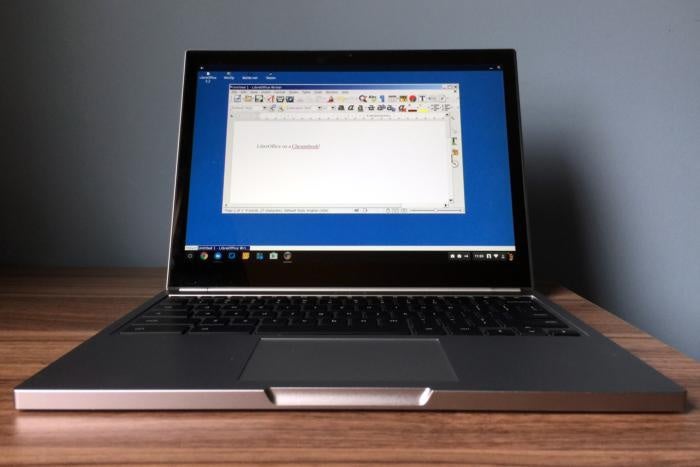For more information, refer to the HP support document Working with Files on Your HP Chromebook. What types of files can I open on my Chromebook? Refer to the Chrome OS Help Web site for a list of supported file types on your Chromebook.
- Can You Install Windows On Hp Chromebook
- Hack Chromebook Install Windows 7
- Install Windows On Hp Chromebook
- Chromebook Install Software
- Install Windows Hp Chromebook

Do you have a Chromebook? Wish you could wipe out ChromeOS and install something else? Good news! You can now do so with the help of a modified BIOS (known as Sea BIOS). A lot of Chromebooks are supported by this modification – so many, in fact, that it would take quite a long time to list them all. Instead, head over to this page here and scroll down to find out if your device is supported.
- Jul 14, 2017 windows on hp chromebook 14? I have a hp chromebook - 14 - x010wm. I want to run the newest version of windows possible on it, can i do this? And how do i do this?
- Ok guys how do I install Windows 10 on this chromebook? Can I get an easy step by step guide.
- Rufus (Need a Windows Machine to run this) 4GB Flash Drive; Step 1: Preperation. First, download the Windows 10 iso and install it to a flash drive using the Rufus program. For partition scheme, make sure you select MBR for Bios or UEFI. Step 2: Boot. Make sure your Chromebook is powered off, and connected to an external power source.
- Apr 04, 2015 Here's how to install Windows 10 on a Chromebook. Text Tutorial: Check out these other videos: Mac OS X on Chromebook https://www.youtu.
- After reading this article, you will know how to install a portable Windows 8 version on a USB and take it with you anywhere you might need to use it. Yes, you read well: now you can take a copy of Windows 8 with you and run it on any Haswell based Chromebook.
If your device is supported and is able to run the modified BIOS, you’ll need to do some things before it can be installed. Specifically you’ll need to disable read-only mode and enable developer mode, as well as remove any sort of hardware read-only switch that may be present on your Chrome device.
Enable Developer Mode
Enabling developer mode on a Chrome device is different depending on what you own. If you have a newer device, you’ll be able to enable it by pressing the Escape, Refresh and Power key all at the same time. If you have an older Chromebook, there may be a special button or key combination that needs to be pressed.
When you’ve determined what combination of buttons to press on your Chromebook, you’ll be brought to a recovery screen. On this screen just press “Ctrl + D” on your keyboard. This will initiate the transition to developer mode. Be patient; this may take a while.
Enable Read/Write on Your Chrome Device
Since the ChromeOS file system is read-only by default, it needs to be set up for full read-write access. Open a terminal by pressing “Ctrl + Alt + T.” This will bring you into the Crosh prompt. From there, just enter shell into the terminal. This will start a Bash shell in which you’ll be able to enter commands into.
Enabling read-write access is easy. Just enter this command:
followed by
After this command has been entered, reboot your device, and the ChromeOS file system will be read/write.
Can You Install Windows On Hp Chromebook

Hack Chromebook Install Windows 7
Note: most Chromebooks have a hardware read/write switch or screw as well. You’ll need to figure out where that is and take it out, too.
Install Modified BIOS
Installing the modified BIOS is incredibly easy. Just press “Ctrl + Alt + T” to open a terminal window, and enter the following command:
Once this command is run, the modified BIOS file will be installed. When it’s complete, just reboot your system.
Install Windows On Hp Chromebook
Note: if you need to install older versions of Sea BIOS, check here.
After your Chromebook starts up again, you will see a black screen that says Sea BIOS instead of a Chrome logo. This means that the installation was successful. if you want to revert back to the regular BIOS, just load ChromeOS back up, run the command above, and select the revert option. It’ll do the rest.
From here your Chromebook is effectively “jail-broken.” Of course, this means it’s possible to install alternative operating systems. Just install it to a USB flash drive, and plug it in to load it up. Sea BIOS by default will load USB first. Enjoy!
Conclusion
Chromebooks are usually counted out and considered to be “not real computers.” The simple fact is that most Chromebooks have compelling hardware with incredible battery life. With the right amount of modifications they can be incredibly useful Linux computers.
How do you feel about replacing your Chromebook’s BIOS? Is it worth the risk? Tell us below!
Image Credit: Chromium.org
Chromebook Install Software
The Complete Hardware Buying Guide
Install Windows Hp Chromebook
Keen to learn how to choose the hardware for your rig? The Complete Hardware Buying Guide shows you what to look out when buying the hardware.